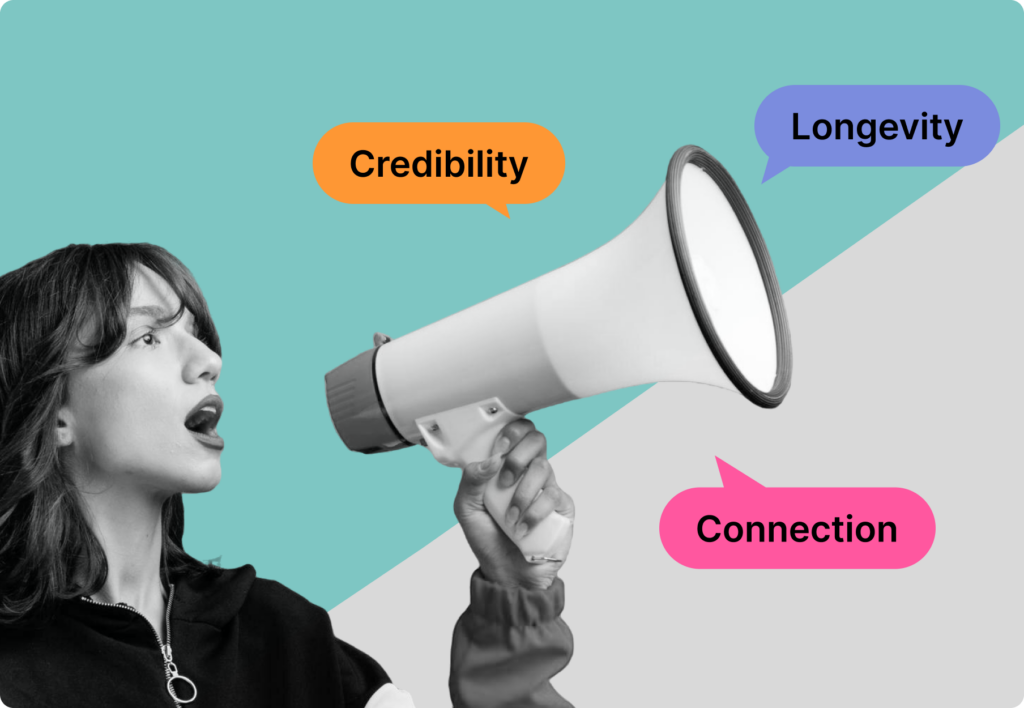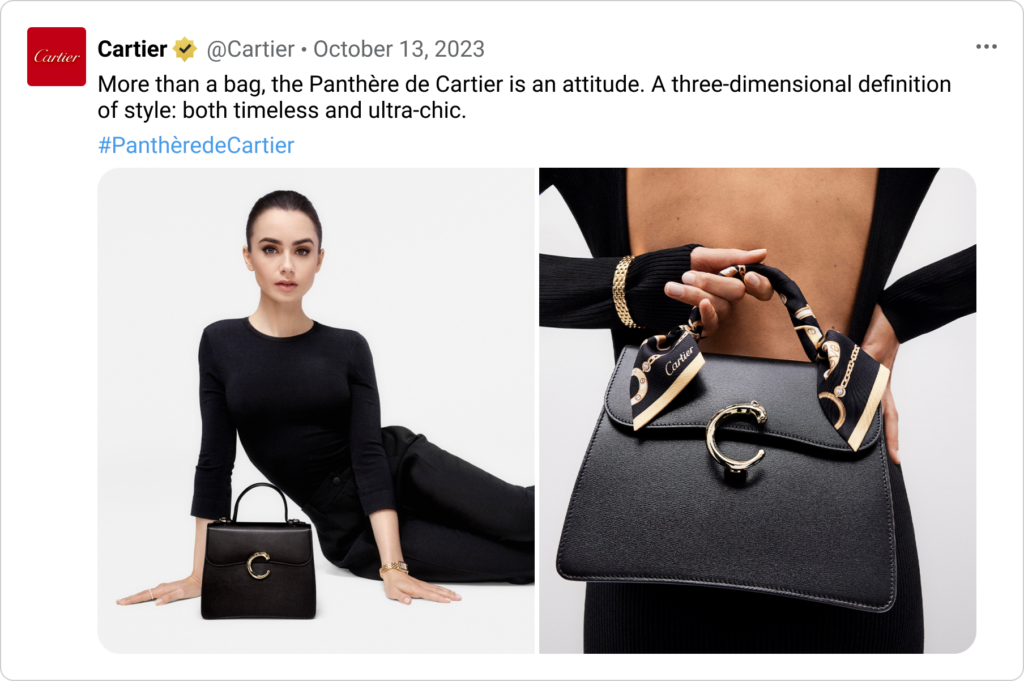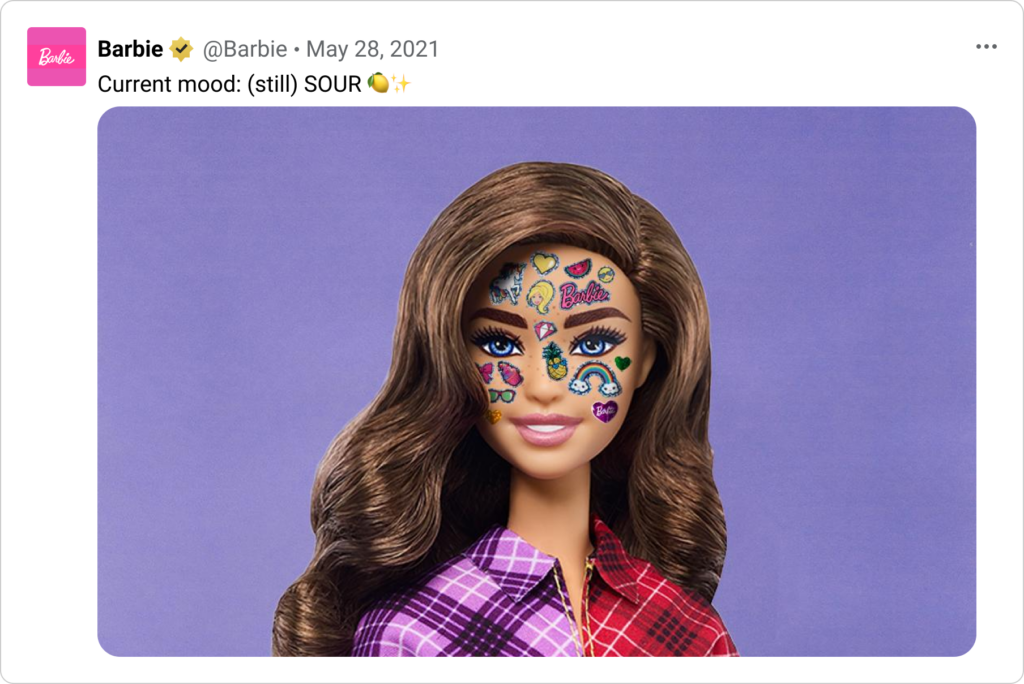Amazon’s brand voice is one of its most potent assets, embodying clarity, efficiency, and customer-centricity. It reflects their commitment to making every interaction feel simple, helpful, and trustworthy, whether it’s through marketing campaigns, product listings, or customer service. This voice sets the tone for how Amazon communicates with customers, partners, and stakeholders, reinforcing its position as a global leader in e-commerce and innovation.
This article will explain what brand voice looks like in practice, how it manifests in business strategies, and why a distinct brand voice is so influential. You’ll also learn key takeaways from other businesses’ approaches that can inspire and guide the development of your brand voice. Whether you’re looking to refine your tone or better align it with your company’s values, there are brand voice examples that offer valuable insights.
Understanding the Importance of Your Brand Voice in B2B
Building a recognizable brand voice is critical for B2B companies because it shapes how other businesses perceive and connect with your brand. Here’s why a strong brand voice is particularly essential in the B2B space:
How It Helps in Practice

- Differentiation in a crowded market: A unique brand voice helps you stand out among competitors who may offer similar services or products. It communicates your company’s distinct value proposition.
- Building trust and authority: Trust is vital in B2B relationships. A consistent voice reinforces your reliability and positions your brand as an authoritative and credible partner.
- Creating emotional connections: While B2B decisions are often data-driven, emotional connections still play a role. A well-defined brand voice can evoke familiarity and make clients feel more aligned with your company’s values.
- Consistency and recognition: A steady brand voice across platforms ensures that your business remains recognizable and professional, making it easier for clients to remember and trust your brand.
- Reinforcing brand identity and values: Your voice reflects your brand’s core values. It signals what your business stands for, helping clients align their goals with yours.
Why Brand Voice Matters in B2B
- Credibility: Businesses feel confident partnering with a company with a clear and reliable voice.
- Connection: A humanized and relatable tone fosters relationships, even in professional contexts.
- Longevity: B2B engagements often span years; consistency in voice supports sustained relationships.
By investing in a distinct brand voice, B2B companies create a compelling and consistent brand voice that can help establish a foundation of trust, reinforce brand values, and develop a sense of familiarity that appeals to other businesses and supports long-term partnerships and growth.
A unique brand voice is crucial for B2B companies, where relationships and long-term contracts often hinge on trust, authority, and reliability.
Defining Brand Voice vs. Brand Tone
What is Brand Voice?
Definition: Brand voice is the consistent personality and style your brand communicates through its content. It shows how your brand voice resonates with your core values, mission, and identity. It’s like your brand’s character—the unique way it “speaks” across all platforms.
Example: HubSpot’s brand voice is professional, helpful, and relatable, while Duolingo’s is quirky and playful.
Why it’s consistent: Your brand voice stays the same across different contexts because it embodies your brand’s core identity. This continuity helps customers recognize and trust your brand.
What is Brand Tone?
Definition: Brand tone refers to the specific style or emotional inflection you use in your communication, which can vary depending on the audience, platform, or situation. It adapts while staying true to the overall brand voice.
Example:
- Formal Tone: Used in a whitepaper or annual report to establish authority.


- Conversational Tone: Used on social media to engage and relate to followers.

Why it’s flexible: Tone adapts to the needs and expectations of your audience, maintaining relevance while staying aligned with the brand voice
Professional Tone of Voice
Definition: A professional tone is polished, clear, and respectful. It’s often used in B2B settings where expertise and credibility must be conveyed.
Example: A law firm might use formal language with concise explanations to assure clients of their competence and authority.

Customer’s Tone of Voice
Definition: This is defined by how you tailor your communication to reflect your customers’ preferences, attitudes, and expectations. Understanding the customer’s tone means adjusting your approach to resonate with them.
Example:
- If your audience is tech-savvy professionals, you might use industry-specific jargon.
- For a younger, casual audience, the tone might include memes or trending slang.
Key Differences
To create an effective brand positioning strategy, businesses must focus on certain factors that shape how customers see the brand:
| Feature | Brand Voice | Brand Tone |
|---|---|---|
| Purpose | Defines the brand’s identity. | Reflects emotional context. |
| Consistency | It’s always the same. | Changes with context. |
| Focus | Long-term personality traits. | Short-term adaptability. |
| Example in Action | “Who we are” (e.g., friendly). | “How we say it” (e.g., formal, casual). |
Why Understanding Both Matters
- Increased Clarity: Ensures your brand is perceived correctly across different platforms.
- Stronger Connections: Helps you adapt communication to meet customer expectations while staying authentic.
- Improved Recognition: Creating a consistent brand voice that makes your brand memorable while allowing for situational flexibility.
Identifying Key Attributes of Your Brand Voice
Creating a b2b brand voice involves selecting core attributes that reflect your brand’s personality and values. These attributes guide how your brand communicates with its audience, ensuring consistency across all platforms. Here’s how to identify and define these attributes:
What’s Included in a Brand Voice?
A brand voice encompasses several elements, including:
- Personality: Defines the human characteristics of your brand (e.g., friendly, authoritative, playful).
- Tone Flexibility: Adaptations in tone for different contexts while staying aligned with the core voice.
- Values and Beliefs: Ensures your communication reflects your brand’s principles.
- Style and Language: Specific grammar, vocabulary, and sentence structure preferences.
Purpose: The underlying goal of your communication, such as building trust or inspiring innovation.
Steps to Identify Core Attributes
One: Analyze your brand’s identity
Ask: What does our brand stand for? What values drive our business?
Example: A tech startup focused on sustainability might emphasize attributes like innovation and responsibility.
Two: Understand your target audience
Ask: Who are we talking to? What do they value?
Example: A B2B SaaS company targeting IT managers may prioritize professionalism and authority to align with its audience’s need for trust and expertise.
Three: Consider your industry and goals
Ask: How do we stand out? What image do we want to project?
Example: A creative agency might opt for a bold, approachable voice to emphasize originality and collaboration.
Four: Define emotional goals
Ask: How should our audience feel when they engage with us?
Example: A financial advisory firm may aim for reassurance and confidence, leading to a calm and trustworthy voice.
Why Attributes Matter
- Consistency: Clear attributes ensure all communications—from ads to emails—sound cohesive.
- Alignment: Attributes align with audience needs, creating trust and relatability.
- Recognition: A distinctive voice helps your brand stand out and stay top-of-mind.
Researching Your Target Audience
To create a helpful brand voice that resonates with your target audience, you need to deeply understand their preferences, needs, and challenges. By aligning your voice with these factors, your communication will become more engaging and relatable.
Why Audience Research Matters
A well-researched understanding of your audience allows you to:
- Build trust by showing you understand their world.
- Speak in a language they understand.
- Address their pain points effectively.
Strategies for Audience Research
Conduct Surveys
Online tools like Google Forms or Typeform can help you gather data about your audience’s preferences, challenges, and communication styles.
- Key questions to ask:
- What tone do you prefer from brands you interact with?
- What are your biggest challenges in [your industry]?
These provide direct insights into your audience’s expectations, helping you craft a voice that aligns with their needs.
Interview Customers
Schedule one-on-one interviews with customers to dive deeper into their experiences and expectations.
- How do they perceive your brand?
- What do they appreciate or dislike about competitors’ communication styles?
These reveal nuanced preferences and emotional triggers.
Analyze Competitors
Study your competitors’ brand voices and engagement tactics. Observe the language and style that resonate with their audience.
- Key metrics to assess:
- Social media engagement.
- Reviews or testimonials highlighting tone and messaging.
These identify industry norms and areas where you can differentiate your voice.
Leverage Social Listening
Use tools like Sprout Social or Hootsuite to monitor social media conversations about your brand or industry. These tools provide organic, unfiltered feedback about what your audience values and how they communicate.
Segment Your Audience
Divide your audience into smaller segments based on demographics, behaviors, or preferences. Tailor your voice for each segment without losing consistency.
Example: A SaaS company might use a more technical tone for IT teams and a simplified, results-driven tone for executive stakeholders.
Final Tips
- Test and Iterate: Use A/B testing on your messaging to see what resonates most.
Stay Consistent but Flexible: Maintain your brand voice while adjusting tone for different platforms and contexts.
Crafting Your Brand Voice Guidelines
Creating comprehensive brand voice guidelines ensures that everyone in your organization consistently communicates across all channels. These guidelines are a reference for your team, freelancers, and partners, keeping your messaging cohesive and aligned with your brand’s personality and values.
Steps to Create Brand Voice Guidelines
Define your brand voice attributes
Identify the core characteristics of your voice (e.g., professional, friendly, bold, empathetic).
How to document: Briefly describe each attribute, including how it reflects your brand’s values and personality.
- e.g.
- Attribute: Approachable
- Description: Our brand communicates in a way that is inviting and easy to understand, making complex topics simple.
- Attribute: Approachable
Understand your audience
Reiterate who your target audience is and why your brand voice will resonate with them.
How to document: Include audience personas in your guidelines to remind writers and creators of the audience’s preferences and challenges.
Establish voice application rules
Guide how the brand voice should adapt to different platforms and contexts.
How to document:
- Include examples for each use case, such as website copy, social media posts, or formal reports.
- e.g.
- Website: “Use a conversational and friendly tone.”
- Email: “Be polite and informative, with a touch of warmth.”
Include “dos and don’ts”
Add clear examples of what to say and avoid to help creators stay consistent. This ensures clarity and minimizes misinterpretation of the guidelines.
- e.g.
- Do: Use active, inclusive language.
- Don’t Use jargon or overly formal phrasing.
List specific phrases to Use or Avoid
Identify signature phrases or expressions that align with your brand’s voice. Flag words or phrases that should never be used.
- e.g.
- Use: “Let’s grow together.”
- Avoid: “Guaranteed success.”
Provide real examples
Show how your voice should sound in real scenarios. Include rewritten examples of poorly executed messaging to demonstrate corrections.
- e.g.
- Before: “We strive to optimize the operational efficiencies of our clients.”
- After: “We help you work smarter and faster.”
Address visual and stylistic elements
Tie voice guidelines to visual branding (e.g., typography, color palette) to create a unified identity.
- How to document: Include rules on formatting (e.g., “Always use contractions for a casual tone”) or stylistic preferences (e.g., “Avoid using emojis in formal communications”).
Provide tools and resources.
Recommend tools (like grammar checkers or tone analyzers) and include links to additional resources for support.
Benefits of Brand Voice Guidelines
- Consistency across channels
Ensures all content—from social media to presentations—feels unified and recognizable.
- Streamlined collaboration
Helps employees and external partners create aligned content, reducing back-and-forth revisions.
- Clear expectations
Refrain from missteps by clarifying how to represent your brand voice effectively.
- Enhanced brand recognition
Reinforces your brand identity, making it more memorable to your audience.
Creating Scenarios for Adapting Tone Without Compromising Brand Voice
Adjusting tone for different content types is essential for tailoring your messaging to specific contexts, audiences, and objectives. While your brand voice stays consistent with your brand’s personality, the tone changes to suit the situation, ensuring the message is effective and resonates with the audience.
Principles for Adjusting Tone
- Understand the audience
Tailor your tone based on the expectations and preferences of your target audience. For instance, an executive audience might require a professional tone, while social media followers might appreciate a casual approach. - Match the context
Consider the platform or format. Formal tones are better suited for reports or presentations, while lighter tones work well for digital ads or tweets. - Align with the objective
What do you want to achieve with the content? Educating, persuading, or entertaining will each require a different tone.
Adapting Tone for Common Content Types
- Sales Presentations
- Tone: Assertive, persuasive, and confident.
- Example: “Our solution guarantees a 30% increase in efficiency, making your team more productive and focused.”
- The audience expects you to showcase authority and competence to justify an investment.
- Whitepapers
- Tone: Informative, formal, and precise.
- Example: “This report explores key trends in the industry, supported by data from over 500 organizations.”
- A professional tone demonstrates credibility and expertise, which is critical for research-heavy content.
- Social Media Posts
- Tone: Conversational, engaging, and approachable.
- Example: “Feeling stuck in your workflow? We’ve got tips to help you crush your to-do list—check them out!”
- Casual language creates relatability and encourages interaction, aligning with the informal nature of social platforms.
- Customer Support Emails
- Tone: Reassuring, empathetic, and straightforward.
- Example: “We’re sorry to hear about your experience! Here’s how we can help resolve this issue right away.”
- A supportive tone builds trust and reassures customers that their concerns are being addressed.
- Press Releases
- Tone: Neutral, professional, and concise.
- Example: “We are excited to announce our partnership with [Company], which will enhance our ability to deliver innovative solutions.”
- The formal tone ensures credibility and professionalism for media outlets and stakeholders.
- Blog Articles
- Tone: Educational, friendly, and engaging.
- Example: “Ever wondered how to improve your email marketing strategy? Let’s dive into some tips you can implement today.”
- The conversational yet informative tone keeps readers interested while offering value.
Training Teams to Use the Brand Voice
Training internal teams to use your brand voice effectively ensures consistent communication across all touchpoints, from marketing campaigns to customer interactions. When everyone aligns with the brand’s voice, it strengthens your identity, builds trust, and fosters a cohesive customer experience.
Brand voice training is important for:
- Consistency Across Departments
Teams like marketing, sales, and customer support interact with audiences differently. Training ensures that despite varied formats, the brand voice feels unified. - Reinforcement of Brand Identity
Clear communication from all departments strengthens your brand’s personality and values. - Avoiding Miscommunication
Training helps prevent off-brand language that could confuse customers or harm your reputation.
Tips for Training Teams
To ensure consistent communication across all departments, focus on practical training methods. Here are some tips to get started:
- Develop a brand voice guide
Document core attributes, tone variations, dos and don’ts, and examples for reference.
- Host Tailored Workshops
Conduct interactive sessions with real-world scenarios for marketing, sales, and customer support teams.
- Create Digital Training Modules
You can offer on-demand learning with quizzes and examples for easy access and retention.
- Encourage Peer Reviews
Set up a system for team members to review and refine each other’s work for voice consistency.
- Schedule Regular Refreshers
Update teams on voice adjustments and evolving trends through periodic training.
- Leverage Real-Time Tools
Use tone-check tools like Grammarly Business to provide immediate feedback.
These steps ensure alignment, boost team confidence, and reinforce a cohesive brand identity.
Monitoring and Evolving the Brand Voice
To keep your brand voice relevant, it is essential to evaluate its effectiveness periodically and adjust as needed. Audience preferences, industry trends, and company goals evolve, and your brand voice should adapt without losing its core identity.
How to Monitor Your Brand Voice
- Analyze Performance Metrics
- Track engagement metrics (e.g., click-through rates, social media interactions) to gauge audience response.
- Evaluate the performance of specific campaigns or content types where the brand voice was prominent.
- Collect Audience Feedback
- Use surveys, focus groups, or social listening tools to gather opinions on how your messaging resonates.
- Pay attention to recurring comments or sentiments about your tone.
- Conduct Internal Reviews
- Regularly audit content across departments to ensure consistency and alignment with the brand voice guidelines.
- Benchmark Against Competitors
- Observe competitors’ communication styles and how audiences respond to them. Identify areas where your voice can stand out or adapt
Signs Your Brand Voice Needs to Evolve
- Shifts in Audience Demographics
- A change in your target audience (e.g., younger users or new industries) may require a more relatable or technical tone.
- Industry Trends and Cultural Changes
- Industry innovations or societal shifts might demand a fresher, more inclusive voice to remain relevant.
- Declining Engagement
- If your messaging no longer sparks interest or connection, it’s time to reassess your voice.
- Major Brand Changes
- Rebranding, new products, or expanded services might require a tone updated to align with the evolved identity
How to Evolve Your Brand Voice
- Stay Flexible
- Retain your core attributes while adjusting the tone for new platforms, audiences, or trends.
- Pilot Small Changes
- Test updated tones in specific campaigns or content pieces to gauge audience reaction before implementing widespread changes.
- Update Voice Guidelines
- Reflect on any adjustments in your brand voice documentation, including new examples and tone variations.
- Engage Teams in the Process
- Collaborate with marketing, sales, and customer support teams to ensure they align with the updated voice.
By actively monitoring and adapting your brand voice, you ensure your messaging remains relevant, impactful, and aligned with your audience’s expectations.
Successful B2B Brand Voice Examples
Zendesk: Clear, Friendly, and Customer-Focused
Voice Attributes: Clear, compassionate, straightforward
Zendesk uses plain language and a conversational tone that’s easy for customers to understand. Their website and help center avoid jargon, focusing on clear, helpful communication that is accessible to all.
Why It Works: Businesses want customer service tools they can trust and use. Zendesk’s easygoing and straightforward approach reassures them that it’s a reliable and user-friendly option.
Trello: Fun, Easygoing, and Practical
Voice Attributes: Friendly, light-hearted, practical
Trello keeps things light and friendly, often using playful language and relatable examples in their content. They share tips and advice that feel like they’re coming from a helpful friend.
Why It Works: Trello makes team collaboration feel approachable, not overwhelming. Their tone makes it easier to see their tool as something you’ll enjoy using daily.
Asana: Inspiring and Organized
Voice Attributes: Inspirational, supportive, organized
Asana’s style is professional but also uplifting. They focus on helping teams work together smoothly and feel good about what they’re achieving.
Why It Works: Asana users care about productivity and staying organized. The brand’s positive tone encourages teams to stay on track and feel motivated.
Dropbox for Business: Simple and Trustworthy
Voice Attributes: Reliable, straightforward, efficient
Dropbox focuses on keeping things polished and easy to follow. They explain how their tools work without overloading readers with complicated tech talk.
Why It Works: For a tool all about secure file sharing, simplicity and clarity are key. Dropbox’s tone makes businesses feel confident they’re in safe hands.
HubSpot: Helpful and Relatable
Voice Attributes: Helpful, approachable, professional
HubSpot’s tone feels like advice from a friendly expert. Their blog posts, guides, and emails aim to educate without overwhelming, keeping the language simple and approachable.
Why It Works: HubSpot knows its audience—business owners and marketers who need clear advice, not a sales pitch. Their approachable tone builds trust and makes people come back for more.
Some B2C With Distinct Brand Voice
Duolingo: Fun and Cheeky
Voice Attributes: Playful, humorous, engaging
Duolingo loves to have fun. Whether it’s the app, their social media, or even notifications from their mascot, Duo, they use playful and often humorous language to keep users engaged.
Why It Works: Learning a language can feel daunting, so Duolingo keeps it light and entertaining. Their tone helps users stick with it, even when it gets challenging.
Spotify: Cool and Personal
Voice Attributes: Casual, personalized, relatable
Spotify’s tone feels like it’s coming from a cool friend who knows all the best music. Their personalized playlists and campaigns, like “Spotify Wrapped,” make you feel seen and connected.
Why It Works: Spotify taps into emotions and individuality, making users feel part of a community while still getting a personal experience.
Fenty Beauty: Confident and Inclusive
Voice Attributes: Empowering, inclusive, celebratory
Fenty Beauty speaks with confidence and makes everyone feel included. Their content celebrates diversity and self-expression, often using bold and empowering language.
Why It Works: Fenty Beauty’s audience wants products that make them feel good about themselves. The brand connects deeply with its customers by focusing on inclusivity and self-love.
Harley-Davidson: Bold and Rebellious
Voice Attributes: Rugged, adventurous, unapologetic
Harley-Davidson’s voice is unapologetically bold and full of attitude. Their messaging talks about freedom, adventure, and living on your terms.
Why It Works: Harley’s customers aren’t just buying a motorcycle but a lifestyle. The rebellious tone makes riders feel like part of a badass community.
Amazon: Straightforward and Customer-Obsessed
Voice Attributes: Practical, direct, customer-obsessed
Amazon’s tone is direct and focused on making life easier for its customers. Their content highlights convenience, reliability, and variety without overcomplicating things.
Why It Works: Amazon’s audience values efficiency. By focusing on the customer and speaking in a no-nonsense way, Amazon reinforces its image as the go-to place for everything.
Amplify Your Brand Voice
Building a strong brand voice is essential, but making it resonate with your audience is where the real impact lies. “Project Branding” can help your business craft a distinct and compelling brand voice while ensuring it’s consistently applied and effectively amplified across all channels.
Through expert guidance, you’ll define your brand’s unique attributes and align them with your audience’s needs and preferences. With clear voice guidelines, your team can deliver consistent messaging that builds trust and recognition. Additionally, tailored strategies maximize your reach, ensuring your voice stands out in social media, email marketing, and more. By monitoring performance and adapting to trends, Project Branding ensures your message stays fresh and impactful.
Ready to make your brand voice unforgettable? Book a free consultation with the Project Branding team today and discover how to amplify your business’s communication and connection.



